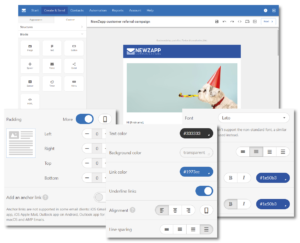The 6 essential steps to a digital transformation internal communications strategy
1. Understand your audiences
Digital transformation involves and affects a lot of people. Each group of employees will have different needs, so it is important that you understand these needs from the outset. Audiences for you to consider include:
- The leadership directing the change – you may need to both learn from and educate this audience. Firstly, you will need to understand the motivations for the project so that you can communicate to other employees. But, before the project starts, you may also need to educate them of the importance of internal comms. Without them onboard with your plan, you are going to have an uphill battle.
- Another consideration is the skills and knowledge of those leaders, would they benefit from a greater understanding? If so, could you also communicate with them throughout the journey sharing data and feedback to help them manage the project more effectively. This may become the responsibility of someone else, but it is always worth checking.
- Those deploying the project – these are the people that are going to be chugging away to make the project a success. While their understanding of the reasons for the project should be strong they may lose sight of the wider benefits, and implications on others. Your role will be to keep them connected with these factors.
- These colleagues will also be the source for much of your progress comms so it is important to maintain a strong working relationship with these individuals.
- Those impacted by the project – “impacted” could be perceived as unnecessarily negative but I think it is important to consider that no matter what the benefits are at the end of a digital transformation project, most people will, at some point, feel unnerved. They may even begrudge the change at some point. By keeping this in mind you will be able to provide reassurance and help them to focus on the long-term benefits.
- Those who need to be aware of the changes – the final group of individuals are those who may not be directly impacted by the project but who need to be aware. These could be colleagues of those working on the project who need to be aware that they will have limited time to focus on other projects or they may be users of a system that will be linked with the project.
- The communications to this group of people are likely to be at a much higher view and be less frequent, but it’s important not to forget about them.
For each of these groups ensure you understand every aspect of how the project will affect them, both positive and negative. Interviews or focus groups may be a quick way to gather this insight.
You may find it useful to create audience personas – an outline of your target persona; what they do, how they think and how the digital transformation will affect them. These will then become your reference material every time you write a communication, helping you to focus on the right topics and perfect the right tone of voice.
2. Consider your culture
This point is linked to the audience mapping mentioned above but it is important to have a separate point to highlight the importance. The statistics above have already highlighted how much of a roadblock culture can be to digital transformation but a study by McKinsey has evidenced just how big a problem it is. Their research found that 70% of transformation projects fail because of culture-related issues.
This is a massive percentage but it is easy to see why. A strong culture can better adapt to change. Any problems in your culture do the opposite. Common cultural problems that will hinder digital transformation include a lack of collaboration, a lack of empowerment and a lack of knowledge sharing.
Of course, it is naïve to think that an internal comms strategy for a digital transformation project can change cultural problems, but you can take steps to help improve it. You can adjust your tone of voice and focus on key areas to help steer thoughts and behaviours. You can also put focus on the parts of your culture that are thriving.
It would also be worth raising your concerns to leadership at the outset, particularly if you have data to back up the theory. This can then be considered at a higher level throughout the project planning stage.
3. Review past change management processes
We learn from past experiences so it is always worth exploring what has previously happened to identify what learnings you can take from it.
If there haven’t been any digital transformation projects similar to this one, what can you take from other projects? If you are unable to access written reports or data, ask people who were involved in the project. What worked, what didn’t, what could have been better with the internal communications?
Research consumes half of this 6-step guide for a reason. It is the backbone of every successful project. After all, we all know the famous Benjamin Franklin quote; “fail to prepare, prepare to fail”!
4. Establish your methods of communication
Consider both the channels and mediums you are going to use.
First start with the how. How will you communicate to each of your audiences? Often email is the channel that will reach most employees. If this is the case for you this should be central to all your communications but are there other channels you could utilise too? For example, an intranet or staff meeting. Could ‘traditional’ channels such as noticeboards and letters, also support your strategy?
Once you know how you are going to communicate then consider what format you are going to use. Consider all the different resources available to you and which one will most effectively portray your key messages.
For example, while a written email may work for some of your audiences, others may respond far better to a video or a Q&A audio session. It may be that you could also visualise the progress of the project or use a newsletter-style format to communicate multiple updates.
Of course you may not know the answer to which form of communication will resonate the most so your internal communications plan could incorporate some testing to help you establish this.
5. Build your internal communication change management strategy
You’ve done the research so now it’s time to create your strategy. Compared to the rest, this is the easy bit!
As a starting point, break the project down into a timeline. Along the top list the different stages of the project and the anticipated durations. Down the side list your different audiences. Then you can map your different communications throughout the journey.
Consider all the findings you have gathered from point 1 and 2 and make a note of your preferred medium and the channels you will use. Colour coding is a great way to incorporate this in a top-level plan without overcomplicating things.
Placeholders can be added for any communications that are reliant on events that will take place in the future, but you can at least schedule everything. This will put you in good stead as the digital transformation rolls out.
6. Review your strategy
Now for the really important bit! No change management internal comms strategy will stay still. And nor should it.
Firstly, timings shift and problems occur. Your internal communications will need to react to these changes, ensuring everyone always receives transparent communications.
Secondly, an effective change management communications strategy will respond and improve throughout the duration of the plan. After all, there is no point sending the same communications if they are falling on deaf ears.
Data will be your king. You need to be able to see which of your communications are resonating and which aren’t. Overall open and clicks will guide you but if you can see this data for each employee you can achieve so much more. With a granular overview you can start to identify advocates who could help you spread your message. On the other hand, you could identify those who aren’t engaging and send a different communication to them.
The more insight you gain, the more you can achieve.
But don’t forget you can also use good old-fashioned techniques. A questionnaire can you give a lot of insight. Granted you won’t be able to do this for every communication but if you are unable to gather the detailed analytics mentioned above, regular surveys throughout the duration of the project will help you to analyse the effectiveness of your communications.
Surveys can also be used to understand the response to your non-digital communications.
But the key message here is to measure as much as you possibly can. This will enable you to be responsive and thus increase engagement levels.





